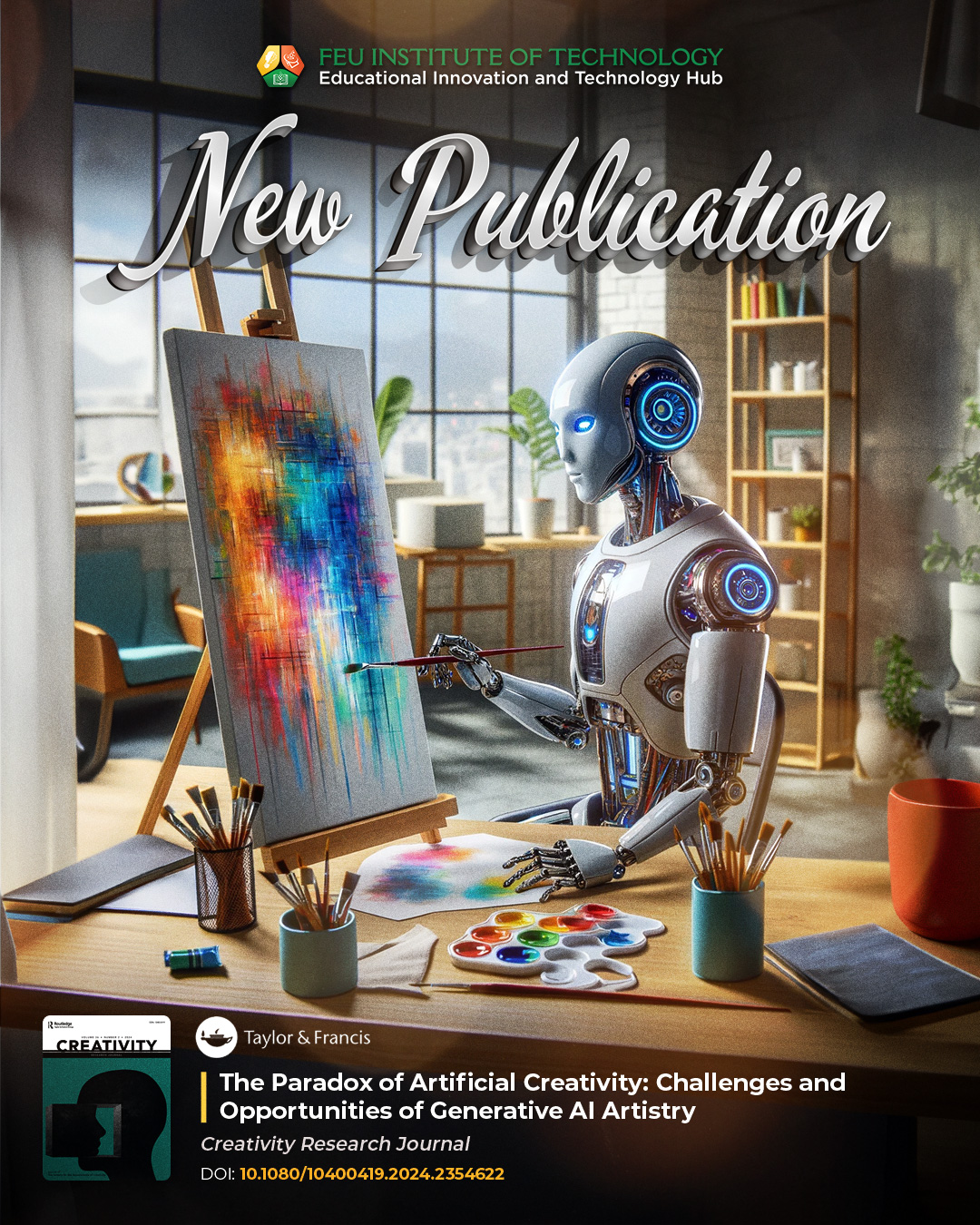The Paradox of Artificial Creativity: A Research Perspective on the Transformative Role of AI in Art
Dr. Garcia explores the challenges and opportunities of generative AI in creating art, which has been gaining momentum since the rise of ChatGPT other AI tools.
June 3, 2024
Research
What makes humans superior to robots? Many philosophers argue that free will and creativity are the fundamental values that set humans apart from other creatures and artificial intelligence (AI). However, the rise of generative AI changed how we create art. With just a few clicks and the proper prompts, computers can produce works of art that mimic human-made artistry.
Generative AI is an advanced form of AI that utilizes machine learning (ML) algorithms to generate new content semi-autonomously, ranging from text and images to music and other forms of media. The intersection of AI and creativity prompts experts to recalibrate what creativity means and how the human role can benefit from it.
Examining Artistry of Generative AI and Artificial Creativity
The recently published study, “The Paradox of Artificial Creativity: Challenges and Opportunities of Generative AI Artistry,†by Dr. Manuel B. Garcia, a Licensed Professional Teacher (LPT) and a professor of information technology at FEU Institute of Technology), examines the transformative changes that AI introduces to traditional artistic paradigms.
Moreover, the new study raises an essential discussion on using generative AI in the arts and its impact on creativity. Overall, it aims to understand the role further and harness the transformative power of generative AI in the creative world, making the paper relevant to artists, technologists, policymakers, and academics by guiding them through the evolving dynamics of generative AI in the arts.

Highlighting Challenges
One part of the study emphasized the various challenges that various industries face when using generative AI. First on the list are authenticity and originality. Their absence in AI-generated art can lead to perceptual bias against artificially-made art, reinforcing the traditional view that genuine artistry is exclusive to humans. The paper also discussed how intellectual property and legal concerns since traditional copyright laws become murky when dealing with generative AI since it has yet to accommodate non-human creators.
It also discussed how generative AI could affect artists economically because it introduced intense market competition. Its ability to create art quickly and cost-effectively contrasts sharply with traditional methods. The paper also showed how AI art can reshape public perception and cultural acceptance narratives by shifting cultural dynamics in the art world.
Discussing Opportunities
Although generative AI for art can pose various challenges in the modern world, it also brings opportunities. For one, it can expand creative boundaries by processing and reinterpreting vast datasets, allowing artists to experiment with complex patterns, textures, and forms that might be challenging or impossible to achieve through conventional means. Moreover, generative AI in art can also pave the way for new markets and economic models through the growing number of digital marketplaces and opportunities for buying, selling, and experiencing AI-generated artworks.
Besides revolutionizing the art world through its styles and economy, AI art can also serve as a unique form of therapy and healing. Unlike typical digital art therapy, generative AI’s capacity to create personalized and responsive therapeutic experiences offers new avenues for emotional expression and psychological healing. Termed “AI art therapy,†this practice involves collaborating with AI to produce art with a therapeutic purpose. On the other hand, generative AI can also aid in art education and creativity assessment by demonstrating artistic techniques, providing creative inspiration, and even critiquing art.
In Conclusion
Generative AI presents a complex landscape with challenges and opportunities that can equally shape art significantly. The study concludes that artists, technologists, educators, and policymakers should focus on harnessing AI's potential to enrich human creativity, broaden participation in the arts, and enhance art's cultural and economic value in society to ensure that the art world continues to thrive and evolve, reflecting the diverse nature of human imagination, now augmented by the remarkable capabilities of generative AI.
Patricia Bianca S. Taculao-Deligero is a Bachelor of Arts in Journalism Graduate from the University of Santo Tomas. She has an extensive portfolio from working in various local media outlets, with articles focusing on lifestyle, entertainment, agriculture, technology, and local government units, among other subjects. Her specialty is in feature writing. She is also proficient in news writing.
